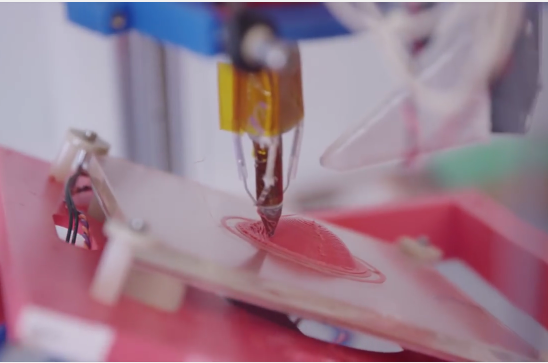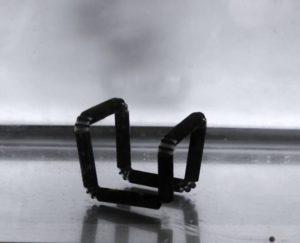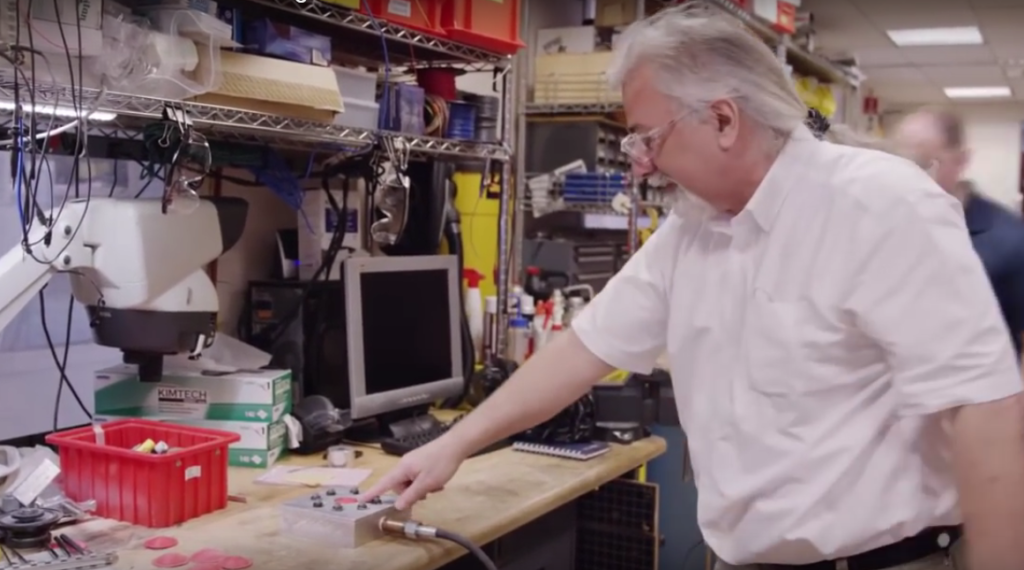We all know what 3D printing is – obviously. (If you don’t, here’s a handy overview. Welcome, newcomer.) We’ve also explored 4D printing, which involves printed objects that mutate and morph into different shapes when exposed to an outside stimulus such as light, water or temperature changes. So what’s involved in 5D printing? Printed objects that levitate? Printed objects that teleport? Time-traveling printed objects?!
Well…no. You can 3D print a TARDIS, but you still can’t make it travel. 5D printing is simply another name for five-axis additive manufacturing, and while it may not be as exciting as teleportation, it’s still pretty cool – and useful. The term “5D” as applied to five-axis printing is being used by Mitsubishi Electric Research Laboratories (MERL), the North American subsidiary of the multinational corporation’s research and development branch. They’ve been experimenting with a print bed that actually rocks back and forth on two axes, creating a fourth and fifth axis as a result.
 What this means for the final printed part is that instead of being created as a series of flat layers, the layers are curved. William Yerazunis, Senior Principal Research Scientist at MERL, describes the advantages of this process as applied to a pressure cap. A cap printed using standard 3D technology will be quickly ripped apart along the adhesion lines when pressure is applied, he explains. But if that same part is printed with the 5D method, curving the lines where the maximum stress will be applied, the part will be three to five times stronger – and will use 25% less material.
What this means for the final printed part is that instead of being created as a series of flat layers, the layers are curved. William Yerazunis, Senior Principal Research Scientist at MERL, describes the advantages of this process as applied to a pressure cap. A cap printed using standard 3D technology will be quickly ripped apart along the adhesion lines when pressure is applied, he explains. But if that same part is printed with the 5D method, curving the lines where the maximum stress will be applied, the part will be three to five times stronger – and will use 25% less material.
“It’s the same shape, made from the same CAD model, made out of the same plastic from the same spool, made on the same machine,” he says. “But the 5D printed part is up to five times stronger. That’s like the difference between a bicycle and a racing motorcycle.”
To prove his point, Yerazunis and a colleague printed the same pressure cap in both 3D and 5D, then tested them by adding pressure. The 3D printed cap pitifully burst after about a second, making it only to 0.1 megapascal of pressure before it decided it had had enough. The 5D printed cap, on the other hand, held on for the application of 3.7 megapascals before blowing its top.
It’s a very different approach to additive manufacturing, and goes to show that the limits of 3D printing are never really set in stone. The process can always be toyed with and altered, sometimes to surprising – and exciting – ends. Many manufacturers may find MERL’s study to be of great interest, especially manufacturers who have held off using 3D printing for end use parts because of insufficient material strength.
“Our goal in this 5D printing project is to make parts that are strong in the directions they need to be strong in, no matter what direction that happens to be….5D printing does require a lot of analysis, and it does require knowing how the part will be used,” says Yerazunis. “But when you can make a part that’s five times stronger, that really changes how you think about 3D printed parts.”
You can watch the experiment for yourself below, and discuss the topic further over in the 5D Printing forum at 3DPB.com.
Subscribe to Our Email Newsletter
Stay up-to-date on all the latest news from the 3D printing industry and receive information and offers from third party vendors.
You May Also Like
Printing Money Episode 17: Recent 3D Printing Deals, with Alex Kingsbury
Printing Money is back with Episode 17! Our host, NewCap Partners‘ Danny Piper, is joined by Alex Kingsbury for this episode, so you can prepare yourself for smart coverage laced...
Insights from Cantor Fitzgerald on AM’s Q1 2024 Landscape
A recent survey by Cantor Fitzgerald sheds light on the persistent challenges within the additive manufacturing (AM) industry in the first quarter of 2024. Based on responses from 38 industry...
3D Printing Financials: Xometry’s Scaling up and Strong Start to 2024
Xometry (Nasdaq: XMTR) kicked off 2024 with strong results, boosting its marketplace and technology to new heights. Both revenue and gross margin soared, fueled by an expanding global network of...
3D Printing Financials: Desktop Metal Targets Recovery Amid Net Losses and Revenue Downturn
Despite facing a decline in revenue and the persistent challenges of a tight economic climate, Desktop Metal (NYSE: DM) is making strides toward operational efficiency. The first quarter of 2024...


































